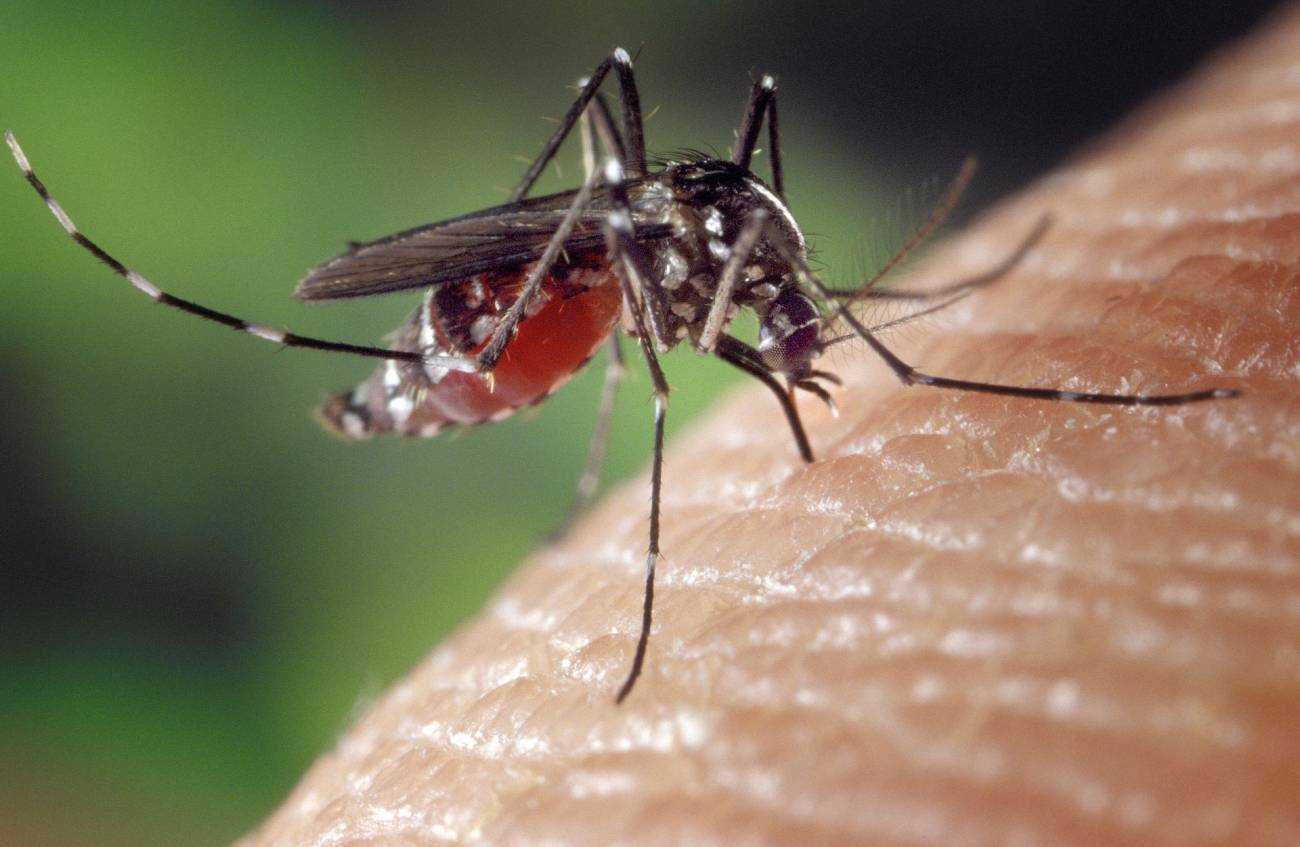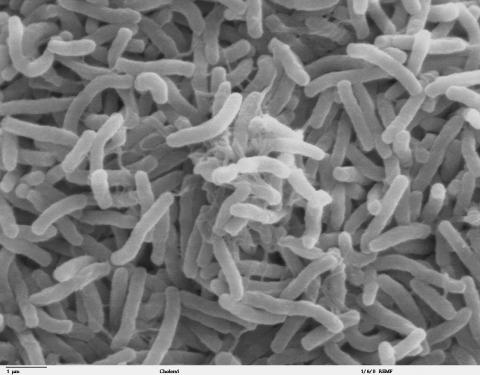Reactions to the cases of autochthonous dengue fever detected in Ibiza in German tourists
The Centre for the Coordination of Alerts and Health Emergencies (CCAES) reported yesterday that last February Germany reported two cases of dengue (one confirmed and one probable), along with four cases compatible with epidemiological links, in residents of Germany who had travelled to Ibiza during the incubation period. One of the potential vectors of dengue is the Aedes albopictus mosquito, which was first detected in Ibiza in 2014. According to the CCAES, the risk of new autochthonous cases appearing in Ibiza, "at this time of low vector activity, is considered low".

Jacob Lorenzo Morales - casos dengue Ibiza EN
Jacob Lorenzo-Morales
Professor of Parasitology, Director of the University Institute of Tropical Diseases and Public Health of the Canary Islands of the University of La Laguna and CIBERINFEC researcher
The public health alert concerning two outbreaks of dengue fever in Ibiza initiated in early February 2023 is related to the transmission of this virus on the island thanks to the existence of a competent vector, Aedes albopictus.
The origin of these outbreaks has been attributed to the existence of an index case that stayed in the same area of the island as the German tourists, and with high probability the presence of the vector and the sufficient viraemia of the index case favoured these cases of autochthonous transmission detected.
It should be noted that the aforementioned invasive mosquito species was first detected on the island in 2014 and is now established in the region.
The Iberian Peninsula and the Balearic Islands meet the necessary conditions for the circulation of the virus and, therefore, the appearance of autochthonous cases of dengue: the presence of a competent vector (Ae. albopictus) and a significant flow of travellers from endemic areas or areas with active dengue transmission that can introduce the virus. This means that the risk of new autochthonous cases is moderate between May and November. For this reason, constant and enhanced entomological surveillance is important during periods of increased mosquito vector activity.
The majority of dengue cases are asymptomatic, although strict measures are required for severe cases (less than 5 %). On the other hand, events of this type support the need for strict entomological surveillance and control measures in the country and for raising public awareness of individual protective measures to avoid bites, especially in regions where invasive mosquito species such as A. albopictus or A. aegypti have not yet become established.
Events of this type can affect the region's economy (tourism) as well as public health and it should be noted that, although the risk of new cases in Ibiza is currently low, the coming months (May to November) will see the beginning of the period of greatest activity of the mosquito vector. These events should be taken into account in order to avoid more serious transmission events and especially to protect those regions where these invasive mosquitoes have not yet established themselves, such as the Canary Islands.
Consuelo Giménez Pardo - dengue Ibiza EN
Consuelo Giménez Pardo
Professor of Parasitology at the University of Alcalá (UAH) and director of the Master's Degree in Humanitarian Health Action (UAH-Doctors of the World)
After many years of absence, dengue has re-emerged in the European region both through sporadic cases of local transmission, driven by the introduction of people infected with the virus, and through the invasion of the mosquito vector species Aedes aegypti and Aedes albopictus. The 2012 outbreak in Madeira, in addition to the impact on the health of the local population, health services and the economy, revealed how difficult it can be to control the circulation of pathogenic arboviruses, especially as Europe is already partially colonised by the dipteran vector Aedes albopictus, introduced in Mediterranean countries. While it is true that dengue transmission models suggest a low risk in Europe, these models rarely include A. albopictus transmission.
During the dengue outbreak in Madeira, appropriate mosquito control measures were effectively implemented. The effectiveness of these measures, in terms of reducing the number of breeding sites, application of pesticides and insecticides, and public health education, largely worked. With no prophylactic vaccine or targeted therapies available, vector control remains the best alternative to restrict virus circulation. In fact, many European countries have already implemented surveillance and control measures for invasive mosquitoes, although only a few include dengue surveillance.
Ongoing surveillance is essential. The surveillance initiated in Catalonia in 2015 to monitor imported cases and detect possible local transmission of arboviruses assessed the importance of entomological surveillance around viremic travellers, which may be effective for early detection of dengue virus in mosquitoes and therefore able to help prevent possible autochthonous transmission.
Considering the increasing frequency of dengue epidemics worldwide and the movement of viremic hosts, new cases are expected to occur in Europe in the future, such as the one detected in France in 2022, with 65 autochthonous cases, six of which occurred in departments that had never experienced autochthonous dengue transmission, or the current one in 2023, detected in Ibiza, Spain, widely reported in the press.
All the prerequisites for autochthonous dengue virus transmission - vectors, returning viremic travellers and climatic conditions - are present in Europe. The establishment of vector populations in peri-urban environments links humans and viruses, opening up the possibility of unexpected outbreaks. More cases are certain to occur and as long as no specific dengue prophylaxis or treatment is available, integrated vector management is the most sustainable control option.
Ana Vázquez - dengue Ibiza EN
Ana Vázquez González
Senior Scientist at the Health Institute Carlos III
Dengue is one of the vector-borne diseases whose incidence has increased most rapidly in recent decades, with an estimated 100-400 million infections each year, approximately 80 % of which are mild and/or asymptomatic. It is currently distributed in large tropical and subtropical areas throughout the world, mainly in urban and semi-urban regions, affecting more than 120 countries, with the Americas, South-East Asia and the Western Pacific being most affected by the disease.
In addition to the burden of disease produced in regions where the virus is present, dengue represents a public health risk in non-endemic territories where Aedes mosquitoes (which act as a vector transmitter) are present, as is the case in Spain, where Ae. albopictus has been established since 2004 and is expanding. In Europe, dengue virus caused major epidemics in the last century until the end of the 1920s, with Ae. aegypti being the vector involved, but after its eradication, all cases described have been imported cases in travellers from endemic areas. However, since 2010, cases of autochthonously transmitted dengue have been described in different European countries, most of them associated with the presence of Ae. albopictus, such as Croatia, France, Portugal (Madeira, an outbreak of more than 2000 cases associated with Ae. aegypti), Germany and Italy. In Spain, the first cases were reported in 2018 and 2019. Travel restrictions in 2020 favoured the non-emergence of new cases.
The news of the detection in Germany of two autochthonous cases of dengue (one confirmed and one probable) in travellers from Ibiza, an island where Ae. albopictus has been present since 2014, reaffirms the need for surveillance of the disease in the months of peak vector circulation in all areas where Ae. albopictus is present. Early detection of imported cases is key to the control of the disease as it facilitates the implementation of prevention measures, being important in this aspect the establishment of vector control (elimination of breeding sites, fumigation...) and personal protection against bites (repellents, mosquito nets...).



